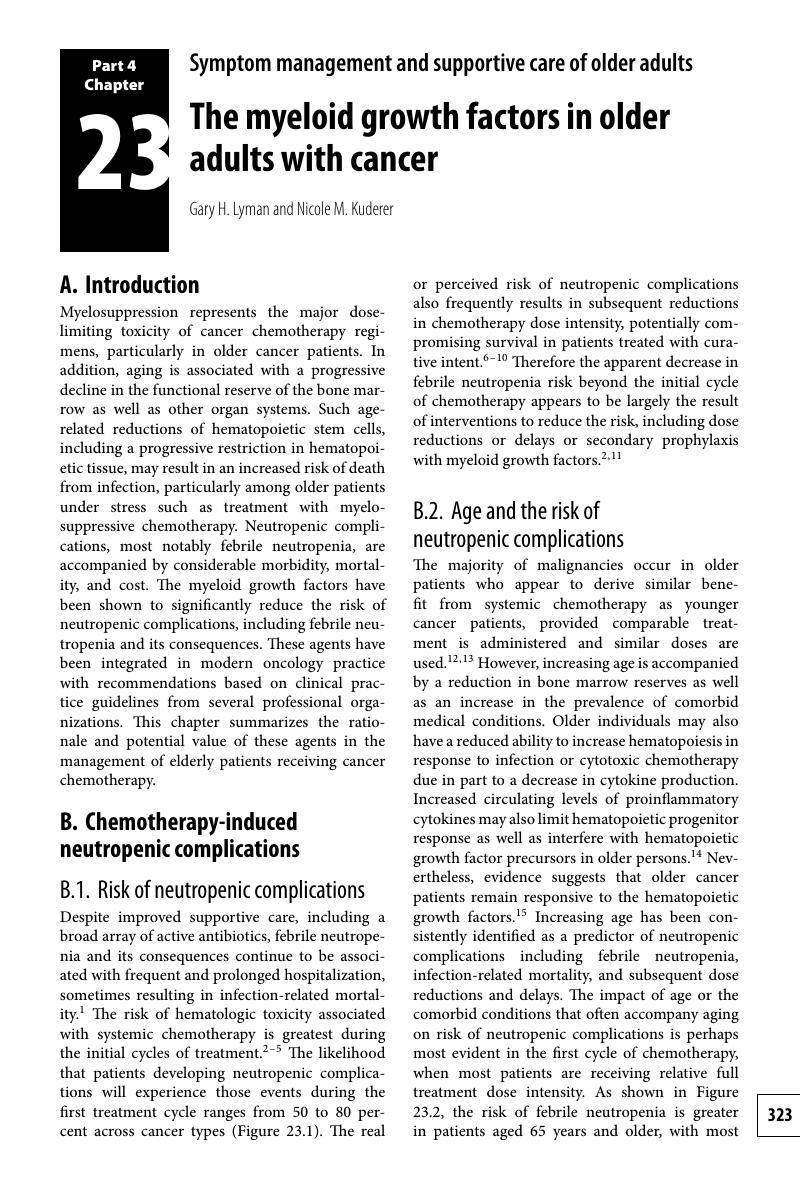Book contents
- Frontmatter
- Contents
- Contributors
- Part 1 Key principles in geriatric oncology
- Part 2 Management of solid tumors in older adults
- Part 3 Management of hematologic malignancies in older adults
- Part 4 Symptom management and supportive care of older adults
- Chapter 21 Optimizing quality of life in older adults with cancer
- Chapter 22 Optimizing functional status in older adults with cancer
- Chapter 23 The myeloid growth factors in older adults with cancer
- Chapter 24 Erythropoiesis-stimulating agents in older adults with cancer
- Chapter 25 Management of depression and anxiety in older adults with cancer
- Chapter 26 Management of pain in older adults with cancer
- Chapter 27 Management of fatigue in older adults with cancer
- Chapter 28 Management of dyspnea in older adults with cancer
- Chapter 29 Management of the gastrointestinal side effects of therapy in older adults with cancer
- Index
- References
Chapter 23 - The myeloid growth factors in older adults with cancer
from Part 4 - Symptom management and supportive care of older adults
Published online by Cambridge University Press: 05 August 2011
- Frontmatter
- Contents
- Contributors
- Part 1 Key principles in geriatric oncology
- Part 2 Management of solid tumors in older adults
- Part 3 Management of hematologic malignancies in older adults
- Part 4 Symptom management and supportive care of older adults
- Chapter 21 Optimizing quality of life in older adults with cancer
- Chapter 22 Optimizing functional status in older adults with cancer
- Chapter 23 The myeloid growth factors in older adults with cancer
- Chapter 24 Erythropoiesis-stimulating agents in older adults with cancer
- Chapter 25 Management of depression and anxiety in older adults with cancer
- Chapter 26 Management of pain in older adults with cancer
- Chapter 27 Management of fatigue in older adults with cancer
- Chapter 28 Management of dyspnea in older adults with cancer
- Chapter 29 Management of the gastrointestinal side effects of therapy in older adults with cancer
- Index
- References
Summary

- Type
- Chapter
- Information
- Practical Geriatric Oncology , pp. 323 - 337Publisher: Cambridge University PressPrint publication year: 2010



